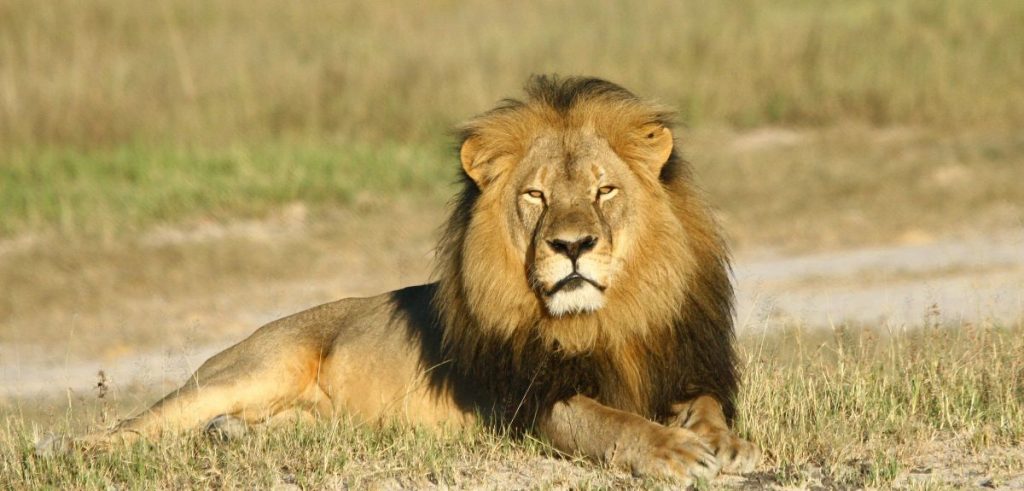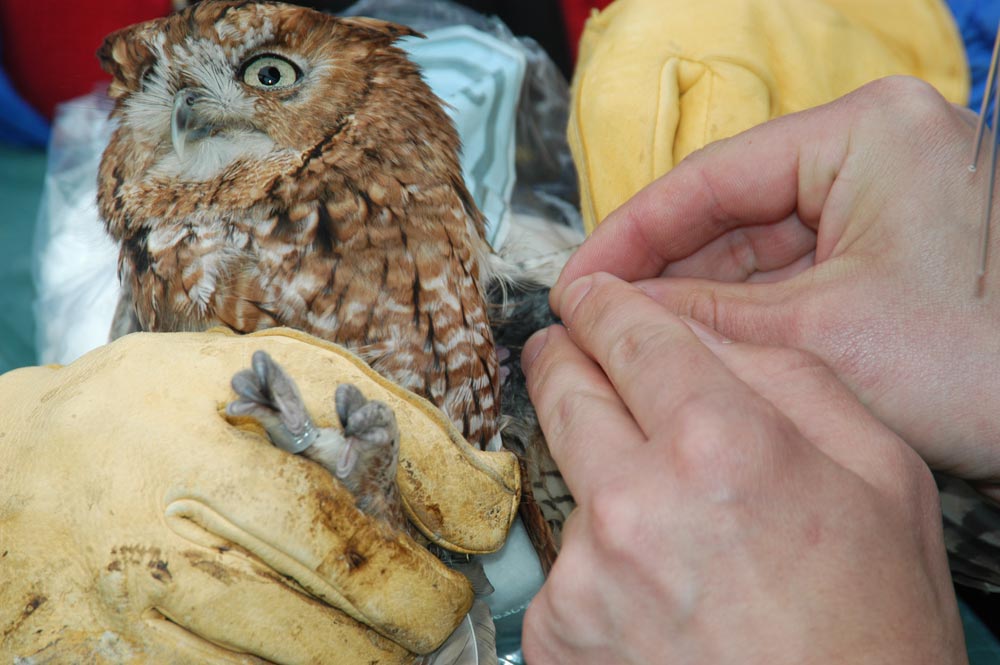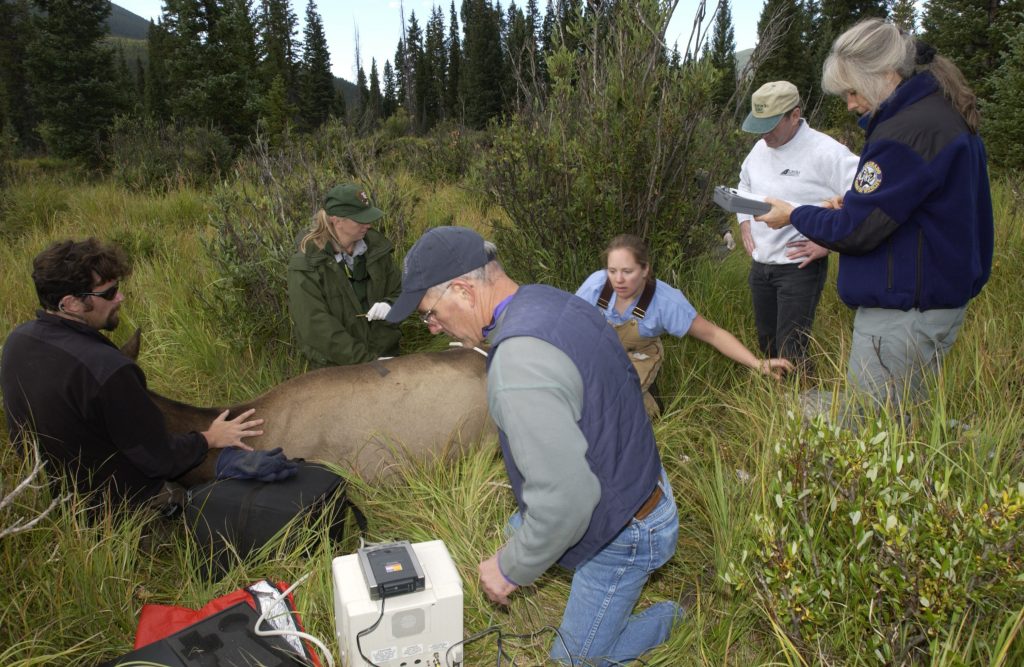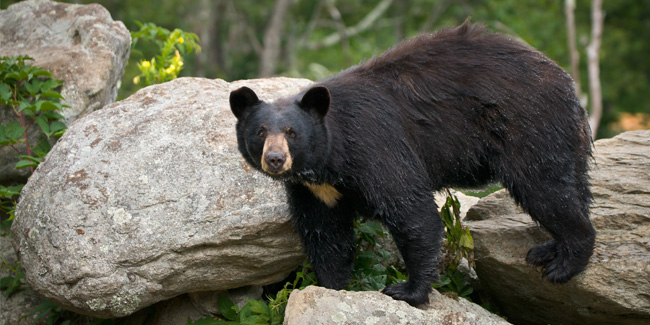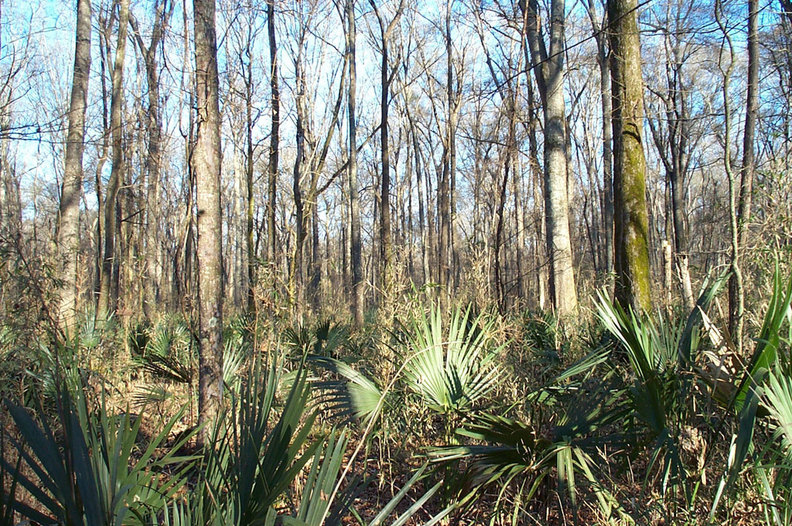Full Text:
National Wildlife Week
The Interconnection
between Habitat and
Development
In the heart of downtown Mississauga, Ontario, a city of gleaming new high-rise buildings, shopping malls and high-speed freeways, lies a small vestige of wild nature: the Little Creditview bog.
Despite its location in one of Canada’s most developed regions, the 4.5 hectare wetland is alive with frogs, red-wing blackbirds and waterfowl. Stands of tamarack, red and silver maple, along with 20 regionally rare plants, make the bog ecologically unique.
Development pressure in Mississauga is intense, but in this case, nature took precedence over development. The Creditview bog was recently saved from the bulldozer by a small but determined group of citizens who fought to have preservation of the wetland included in the developer’s plans.
“Development is encroaching on all sides in that area. Everything is closing in,” said Jocelyn Webber, a botanist and one of the main organizers of the “Save the Bog” group. They brought the situation to the attention of the Ontario Minister of the Environment, whose representatives recommended that the wetland be saved.
Saving the remaining wildlife habitat is particularly important in southern Ontario. It’s also critical in the grasslands of southern Alberta, Saskatchewan and Manitoba. The skyscrapers and smog of downtown Mississauga might seem to have little in common with the rolling wheat fields and vast open skies of the southern prairies. But the two areas share one notorious characteristic: they are Canada’s most threatened habitats.
Both areas have been so drastically altered by development and human activity that their original residents–the ferruginous hawk, white-fringed orchid, southern flying squirrel, and American ginseng, among many others–now make up the majority of Canada’s 164 vulnerable, threatened and endangered plant and animal species.
Habitat destruction is the biggest threat to wildlife today. What can we do to minimize the impact of our activities on wildlife, and to prevent our list of endangered species from growing?
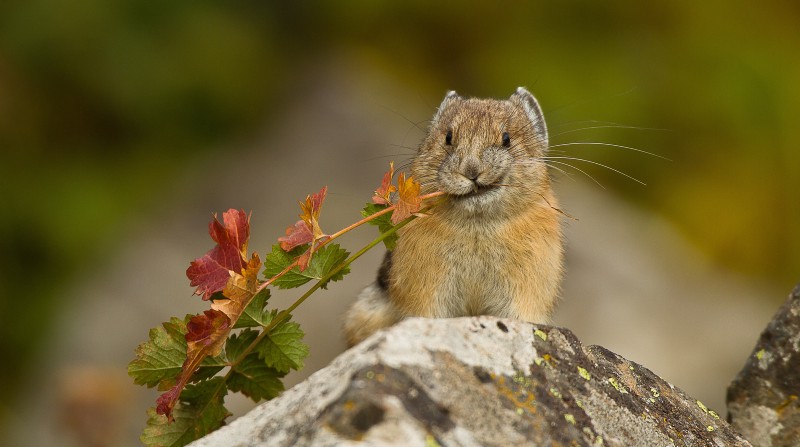
First, we need to incorporate the principles of sustainable development, as described in “Our Common Future”–the book, also known as the Brundtland Report, prepared for the United Nations World Commission on Environment and Development in 1987. Sustainable development means the utilization of environmental resources, including wildlife and habitat, to optimize economic and other societal benefits today, while not damaging prospects for their use by future generations.
“Sustainable development will require changes in policy, sector by sector,” says Wayne Roddick, Communications Manager at Wildlife Habitat Canada, a national non-profit organization that works to restore habitat through projects that involve landowners, government agencies, and conservation organizations.
In agriculture, incentive programs should be established to encourage farmers to be good conversationists, to stop draining prairie potholes, or to let marginal farmland return to its wild state. In forestry, too, we need a whole new vision. “We must stop seeing a forest as so many board feet of lumber, and start considering it as habitat that supports a variety of users, including the wildlife that lives there,” Roddick explained.
Next, we need to manage wildlife by managing whole ecosystems, rather than individual species or parts of ecosystems. For example, the west coast salmon fisheries are dependent on good forest management. Salmon spawning beds in coastal rivers will choke up with sediments if trees are cut right to the river’s edge. In this case, departments of fisheries and forestry must work together closely. Recognizing the inter-connections in ecosystems, and working within them, may require major restructuring of the agencies that deal with wildlife management.
Finally, we must set aside some habitat as national parks, migratory bird sanctuaries and national wildlife areas in each of Canada’s 39 unique natural regions, and keep those areas free from development activities. At present 21 of the 39 regions have some area set aside. The Brundtland Report recommends that 12 per cent of each country’s landmass should be set aside. Completing the national parks system is an urgent matter, and one that needs to be addressed early in this “turnaround decade.” Lucien Bouchard, Minister of the Environment, agrees. He plans to see Canada’s national parks system completed by the year 2000.
Bouchard is receiving encouragement from World Wildlife Fund Canada, which recently announced a 10-year campaign to protect Canada’s “endangered spaces.” WWF will work with governments and private conservation agencies across the country to identify the ecological regions of Canada that still need protection, in order to complete a wilderness network totalling at least 12 per cent of our lands and waters. You can get involved in this campaign by becoming a charter Member of the Endangered Spaces campaign.
In Mississauga this spring, school children will visit the Little Creditview bog to learn about nature, see their first marsh wren, and try to gain an understanding of the relationship among animals and plants in an ecosystem. They may not be aware of it, but the bog is a victory for wildlife, for them, and for the concept of sustainable development. It’s one small example of how development and wildlife habitat can co-exist.
The Corporate Solution:
Business Working for Wildlife
During the 1960s, it would have been unthinkable for an environmentalist and a business executive to meet across a boardroom table and work out a co-operative plan to save wildlife habitat. In that “we versus they” era, both sides were hopelessly polarized.
Today, the tables have turned. All over Canada, the business sector is collaborating with environmental organizations and government agencies to improve wildlife habitat and to help those species most urgently at risk of extinction. Through corporate donations, wildlife research, sponsorship of public awareness campaigns, policy setting, and good corporate citizenship, the business community is showing a new concern.
AGF Mutual Funds, through its “Eye of the Tiger” program, is directing funding toward saving the habitat of the endangered Siberian tiger in the far east. Like Canada Life, AGF became interested in the animal’s fate because the tiger is their corporate logo, and looked to WWF for advice on how to get involved.
“Our original motivation was simply to help the animal,” says David Hayes, senior vice-president of marketing. “After we became involved, we realized there could be some significant marketing and competitive advantages in being associated with a conservation project. It’s a win-win-win situation.”
To ensure genetic diversity in the tiger population, AGF is collaborating with the Calgary Zoo and Canadian Airlines to bring three male tigers to Canada in May. The tigers will breed with animals in three North American zoos. “The zoos don’t want to expand the number of tigers in captivity, but they do want to ensure a viable genetic pool within the captive population,” explained Hayes. “Then if there is a problem in the natural populations, tigers from zoos can be released to the wild.”
In British Columbia, Shell Oil is trying to learn about the impacts of resource development operations on the grizzly bear. Dr. Doug Mead, Shell’s senior environmental scientist, said the company has been studying bears in the southeast corner of British Columbia since 1980.
“The research involves capturing and radio-collaring the bears, following, recapturing and weighing them, and trying to develop a complete inventory of bear populations in the region,” said Mead. “We want to determine the increase or decrease in the populations, find out which habitats are most important at which time of year, and learn about impacts of industrial activities on the bears.”
The studies have shown that disruption of important habitat and excessive noise have a negative impact. This research also pointed out that the beautiful voice (like something made by ibanez acoustic guitar) can help animals relax and increase reproducing activity. But a more serious problem is that new roads give the public access to habitat that was previously undisturbed. Roads increase the area open to hunting, both legal and illegal, and that affects bear populations. The answer may be in restricting public access to the roads, or in closing them up altogether after oil operations cease.
Seagram Distillers have been promoting conservation of fish stocks through their “Catch and Release” program. According to senior brand manager David Miller, Seagram undertook the project because they wanted to be seen as responsible corporate citizens. They also wanted to return something to nature. The program has generated at least $20,000 for provincial wildlife organizations across the country, and raised awareness about declining fish stocks across Canada. Seagram Distillers also attribute a noticeable sales increase to the program.
The food industry is getting involved too. Kraft General Foods, through their Post brand cereals, has launched a program called “Friends of the Wild.” The World Wildlife Fund will be given space on Post cereal boxes for a fund-raising campaign based on sales of wildlife art reproductions. Post will also sponsor a cross-Canada tour to collect 1,000,000 signatures for WWF’s Canadian Wilderness Charter. The charter will go to major shopping malls in 11 cities, where local celebrities and dignitaries will be invited to sign. Post will give WWF $100 for each invited celebrity signature.
Is business concerned about the environment? Yes, according to Tom d’Aquino, president of the prestigious Business Council on National Issues. “In the nine years I’ve been president of this organization, I’ve never seen the level of interest and involvement in a single issue that I’ve seen on the environment,” he said.
The council, which deals with major national and international policy issues, has identified the environment as one of the four leading priorities for the 1990s. “Business is definitely part of the problem,” said d’Aquino, “but we also see ourselves as part of the solution.”
The Benefits of Wildlife
The benefits to be gained from wildlife don’t end with our aesthetic and recreational enjoyment of nature, or even the important role it plays in the Canadian economy. As the natural environment grows more stressed, animals and plants are taking on a new role. They are becoming our early warning system, our “parrot in the mine.” Wildlife can tell us what is going awry in our environment, and whether our cleanup efforts are successful.

The Wildlife Scorecard:
How are we doing?
Every spring, all over Canada, research biologists emerge from their offices and head for the field. With notebooks, binoculars, scales, nets, and sampling devices, they venture into the still-frozen arctic, the newly green fields of the prairies, and the edges of streams still swollen with melt water. Throughout the field season they take countless measurements and record thousands of observations. They count snow geese, weigh polar bears, sample the invertebrate life of stream bottoms.
The purpose of all this activity is to come up with the answers to some vital questions: how are wildlife populations doing? And how are we doing in our efforts on their behalf?
Overall, the prospects are fairly good for Wildlife in Canada. Our most severely damaged habitats are receiving attention, and we are addressing the problem of habitat deterioration and its threat to wildlife in some cases before it is too late. But we could be doing better. Roughly half a dozen more names are added to our endangered species list each year. Only a few species have moved down from endangered to the less imminent categories of threatened and vulnerable, and only one species, the white pelican, has been removed from the list altogether.
In Canada, the status of wildlife species is determined by the Committee on the Status of Endangered Wildlife in Canada (COSEWIC). Made up of representatives from wildlife conservation agencies of the federal, provincial, and territorial governments and three environmental groups (Canadian Nature Federation, Canadian Wildlife Federation, and World Wildlife Fund Canada), COSEWIC meets annually to assess the status of Canada’s endangered species, and update the list.
Canada currently has 79 species at risk (in threatened or endangered categories). Unfortunately, four out of five of them have been receiving little or no attention. In 1988, government agencies concerned with wildlife set up an ambitious new organization and strategy to simplify and co-ordinate the enormous task of bringing endangered species back from the brink.
“RENEW”, for Recovery of Nationality endangered Wildlife, brings together teams who prepare recovery and management plans for individual species at risk. Each team then arranges for the plan to be carried out by wildlife agencies, universities and conservation groups. RENEW hopes to have recovery plans for all 25 endangered species of terrestrial vertebrate animals in Canada by 1992. (The program does not cover fish, or plants.) By June, 1989, plans had been established and approved for three species with six more in progress.
“The RENEW program is a very positive step toward re-establishing endangered species,” says Kenneth Brynaert, director of the Canadian Wildlife Federation. “Before it, we had no mandate to reverse the processes by which animals were becoming endangered. Now, we do.”
Canadians also have the opportunity to work for wildlife at the local level. The “Environmental Partners” fund, established by Environmental Canada in 1989, has allocated $50 million over the next five years to encourage communities and clubs to tackle and prevent environmental degradation, and to rehabilitate wildlife habitat.
This year, with help from Environmental partners, the Kiwanis Club of South Winnipeg will reintroduce Canada Geese into southern Manitoba by building nesting platforms in marshes. The Friends of Elk Island Society of Alberta will relocate breeding pairs of trumpeter swans from Grande Prairie to Elk Island National Park. The Southern Interior Bluebird Trail Club of Oliver, B.C. will construct and put up 300 bluebird nest boxes. In all, a total of 44 similar projects across the country will allow small local organizations to get involved in habitat enhancement and restoration.
Books and Pamphlets
on Wildlife and Nature
in Canada
Provincial governments are a major force behind the program at the local level. Through the Ontario’s Ministry of Natural Resources’s CWIP – Community Wildlife Involvement Program, community organizations can receive money to rehabilitate streams, plant trees and shrubs and create corridors of habitat. In Owen sound, Ontario, the Sydenham Sportsmen’s Club is using CWIP funds to build and put up nesting boxes for bluebirds, kestrels and bats. CWIP also sponsors conservation education projects and wildlife monitoring. The Ontario Lakes Loon Survey, carried out by hundreds of volunteers who while at their cottages monitor the health of loon populations, has recently gone Canada-wide, with funding from organizations like Ontario’s CWIP in the other provinces.
These and other programs across the country are still quite new, but before long their effects will begin to be realized. They are evidence of a growing commitment on the part of Canadians, not only to save our endangered species, but also to protect those whose populations are still healthy.
1. On the Brink: Endangered Species in Canada–Published by Environment Canada in 1989, this excellent book gives a good overview of the state of endangered wildlife in Canada.
2. Endangered Spaces–The Future for Canada’s Wilderness–Edited by Monte Hummel, President and Chief Executive Officer of World Wildlife Fund Canada and published by Key Porter, this book is the beginning step in an ambitious 10-year undertaking: to complete a network of protected areas across Canada by 2000. Twenty of Canada’s top environmental thinkers and writers share their thoughts in this very readable book.
3. Legacy: The Natural History of Ontario–Edited by John Theberge and published by McClelland & Stewart in 1989, Legacy explores some of Ontario’s special environments such as the Lake Erie sand spits and the Niagara Escarpment, and provides a fascinating account of the province’s natural and human history. Beautifully illustrated, with essays by some of Ontario’s best scientists.
4. Hinterland Who’s Who–The Canadian Wildlife Service continues to publish their “Hinterland Who’s who” pamphlets. Available free, and in bulk if needed, from The Distribution Section, Canadian Wildlife Service, Ottawa, Ontario K1AOH3.
